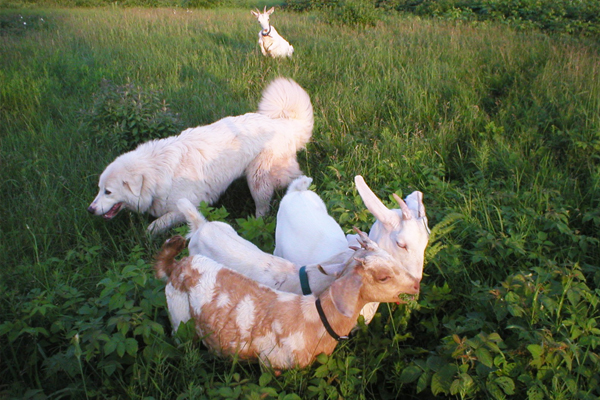Chevon, or goat, is the most widely-consumed meat in the world, making up almost 70 percent of the red meat eaten worldwide. Learn the benefits of consuming this preferred meat option.
NUTRITIOUS
It is a nutrient-dense food that is low in total and saturated fat and cholesterol. The saturated fat in cooked goat meat is 40% less than that of chicken, even with the skin removed. It is 50-60% lower in fat than similarly prepared beef, but has the same or more protein content. It also has high levels of iron and potassium.
It doesn’t have the gamey taste of venison and resembles veal.
100% GRASSFED
- Higher in beta-carotene: Pasture-fed ruminants may have 7 times the concentration of beta-carotene (precursor of Vitamin A) than grain-fed. Vitamin A is important for many body functions including vision, bone growth, cell division and the immune function.
- Higher in vitamin E (alpha-tocopherol): Pasture-fed ruminants may have 4 times the vitamin E than grain-fed. Vitamin E has been associated with a lower risk of heart disease and cancer.
- Higher in the B-vitamins thiamin and riboflavin: These Vitamins are important to maintain and support energy, nerves and muscles.
- Higher in the minerals calcium, magnesium, and potassium: These minerals are important to maintain bones, nerves and muscles and helps blood to clot. Potassium helps lower the risk for high blood pressure.
- Higher in total Omega 3’s: Omega 3’s reduce inflammation, lowers the amount of serum cholesterol and triglycerides, prevents excess clotting and is thought to reduce the risk of cancer.
- Higher in conjugated linoleic acid (CLA) and vaccenic acid: CLA is thought to reduce cancer, high blood pressure, cardiovascular disease, osteoporosis and insulin resistance diabetes. Vaccenic acid protects against atherosclerosis, a contributing factor in cardiovascular disease.
- Lower in the saturated fats linked with heart disease. Saturated fats (e.g., cholesterol, triglycerides and low-density lipoproteins) have been shown to play a significant role in heart disease and stroke.
HUMANE HARVEST
According to the Food and Agriculture Organization of the United Nations: In the healthy and well-rested animal, the glycogen content of the muscle is high. After the animal has been slaughtered, the glycogen in the muscle is converted into lactic acid. This lactic acid is necessary to produce tasteful and tender meat, of good keeping quality and good colour. If the animal is stressed before and during slaughter, the glycogen is used up, and the lactic acid level that develops in the meat after slaughter is reduced. This will have serious adverse effects on meat quality.
